24 Tips for a Social Media Growth Plan That WORKS
Everyone is on social media. But what's the secret to translating your posts into more sales and a stronger brand? A social media growth plan. Get these tips!
Updated November 6, 2024

Imagine you're at a friend's birthday. A stranger walks in, comes straight to you, says hi, and then proceeds to tell you how awesome their job is, how many cocktails they had on their two-month vacation in Bali, and how they just bought a new car. All, while constantly trying to push you out the door and to their homes, so you can hear more about them there.
Don't let your social presence sound like that guy. Instead, use social media to listen, engage, and converse with your target audience. Share valuable content that resonates with them and adds value to their lives without always pushing sales pitches or shamelessly self-promoting yourself.
Social media marketing is one of the single most powerful platforms you can use to grow your audience and business, drive attention and sales, and, overall, build loyalty with those who are already buying with you.
...And that's exactly what this guide is all about.
Want to supercharge your social media marketing strategy and make a bigger impact?
Keep reading.
What is a social media marketing strategy?
A social media marketing strategy outlines social media goals, performance metrics to measure performance, and the tactics you will use to achieve them. A social media strategy doesn't have to be complicated, but it needs to be simple, and specific, and it should come with meaningful, measurable goals.
Difference between social media strategy and social media plan
Some social media specialists distinguish between a social media strategy and a social media plan. In essence, the difference between the two concepts is that a social media strategy is the overall approach or set of guidelines for using social media, while a social media marketing plan is more specific and lays out the detailed steps and actions needed to achieve the goals outlined in the digital marketing strategy.
(Source)
Advantages of social media marketing
Social media is one of the biggest, fastest-growing, and most profitable marketing channels. Regardless of which social networks you choose to bring your business on, social media will:
Boost brand awareness
Social media allows you to reach a larger audience and showcase your brand personality. With a consistent posting schedule, engaging content, and the right hashtags, businesses can increase brand awareness within their target market.
Yield solid ROI (return on investment)
Some studies show that social media yields a $2.80 return for every dollar invested. Of course, this number can vary wildly from one business, strategy, set of audience demographics, etc., to the next. As such, creating a social media strategy can help businesses ensure that their efforts and resources are being allocated effectively to produce the highest ROI possible.
Help with Search Engine Optimization
Although there's no direct mention anywhere that social media posts are part of how Google's algorithm ranks search results, there's compelling evidence that social media activities indirectly contribute to SEO success. For example, a well-liked and shared article from your website on social media can spread links from relevant and authoritative websites throughout the Internet. This could help Google or other search engines calculate the relevance and authority of your website pages.
No matter how you look at it, one thing's for certain: social media can drive more people to your website, creating traffic and uplifting your entire site from that point of view.
Improve customer service
Social media can be a good way to interact with customers for support and engage in social listening. Although you want to avoid too many public questions (and admonishes), it's an excellent way to help folks with smaller issues and get them on the right track.
Plus, integrating a social media messenger bot can help businesses automate quick responses and provide 24/7 customer support. It's not quite the same as human customer support, but it can do the trick for quick questions.
(Source)
Pro tip: want to automate even more? Check out our guide on social media automation.
Why do you need a strategy for social media?
A lot of businesses go about their social media in an ad hoc way. They post when they have time or feel like it, and don't put much thought into what content type they're sharing or why. The issue with this approach? It's not effective. Without a strategy and actual social media KPIs, you're unlikely to see the real benefits of social media marketing mentioned above.
Here are the three main advantages of building an actual strategy for your social media network:
Be more efficient
When you have a social media strategy in place, you can plan and schedule posts in advance. This saves time and effort for other important tasks.
Stay consistent with branding and messaging
A clear social media strategy helps businesses maintain consistency in their brand voice, tone, and overall messaging. By having set guidelines for what to post and how to present your brand, you can ensure that all your social media content aligns with your overall branding.
Achieve long-term sustainability
A social media strategy helps businesses stay organized, focused, and on track with their social media marketing goals. It also allows for regular evaluation and adjustment to ensure long-term sustainability and growth in the ever-changing world of social media marketing.
(Source)
How to create a social media growth plan from scratch
Not sure where to start with your social media growth plan? Here are some of the most important things to know:
Determine who your audience is
Knowing who your ideal customer is can help you tailor your content and messaging to appeal to them specifically. Conduct market research, analyze your current customers, and use social media analytics to gain insights about your target audience.
Some elements you could research when defining your audience include:
Demographics
This will tell you who your target social media users are in terms of age, where they live, their education level, income, and other important demographic information.
Psychographics
This will go beyond basic demographics to understand your customers' personality traits, values, attitudes, interests, and lifestyles.
Online behavior
This includes how your audience uses social media platforms (e.g. which ones they prefer, what type of content they engage with), as well as their online shopping habits.
Interests
What are your customers' hobbies, and where are they likely to hang out online? True: knowing this about all your customers is impossible. But you can determine the interests of your target audience and use that to create compelling content they will find interesting. Doing this will help you resonate more with your customers.
Goals
What do your customers need? What do they want to achieve? Understanding their goals can help you create content that speaks directly to them, shows how your product or service can help them reach those goals, and ultimately convert them into paying customers.
The kind of content they consume
What type of content are they most likely to engage with? What combination of video, images, and text do they prefer? Understanding this can help you optimize your content strategy and ensure that you're delivering the right type of content to attract and retain your target audience.
Set your SMART social media marketing goals
You'll never know if your social media strategy is working if you don't have goals to measure it against. So, to be sure you have a North Light to follow in all things social for your brand, make sure to set up your SMART goals:
S – Specific
Define exactly what you want to achieve with your social media efforts. This could be increasing brand awareness, driving website traffic, or boosting conversions.
M – Measurable
Determine how you will measure progress toward your goal. For example, tracking performance metrics like engagement rate, click-through rate, and conversion rate can help track the success of your social media strategy.
A – Achievable
Set realistic goals that you can reasonably achieve. Don't set yourself up for failure by setting unattainable goals.
R – Relevant
Ensure your social media goals align with your overall business objectives and contribute to the growth of your brand.
T – Time-bound
Set a specific timeline for when you want to achieve your social media goals. Otherwise, you might stretch it out needlessly – and you won't achieve many palpable results with your social strategy.
(Source)
Determine which KPIs to follow
Once you have your goals in place, you need to determine which Key Performance Indicators (KPIs) are most important for measuring your success. Some common KPIs include:
- Engagement rate: This measures how much people interact with your content on social media, such as likes, comments, shares, and clicks.
- Reach: This indicates the number of unique users who have seen your content on social media.
- Click-through rate (CTR): This shows how many people clicked on a link you shared on social media. It's an important metric for measuring website traffic generated from social media.
- Conversion rate: This measures the percentage of your audience who took the desired action after seeing your content, such as signing up for a newsletter or making a purchase.
- Cost per click (CPC): This measures the average cost of each click on your social media ads.
- Return on investment (ROI): This shows the overall impact and success of your social media marketing efforts by measuring the revenue earned from your investments in comparison to the costs.
Decide which channels you want to be on
Contrary to popular belief, you don't have to be on every social media channel under the sun. Instead, you should focus your efforts on where it matters most for your brand and your target audience. This means understanding which channels your audience is active on, what type of content they prefer to consume there, and where you can effectively reach and engage with them.
Some popular social media channels to consider include:
- Facebook: The largest social media platform with a diverse user base and various social media advertising options.
- Instagram: A highly visual platform perfect for showcasing products and reaching a younger audience.
- Twitter: A fast-paced platform that can help you engage in real-time conversations with your audience and keep up with the latest trends.
- LinkedIn: The go-to platform for professional networking, B2B marketing, and thought leadership.
- YouTube: The second-largest search engine after Google, making it a powerful platform for sharing video content and reaching a wide audience.
- Pinterest: An ideal platform for businesses in the lifestyle, home decor, and fashion industries as it heavily relies on visual content.
- TikTok: A rapidly growing platform known for its short, engaging videos that can help position your business as creative, snappy, and modern.
Source
Run an audit on existing channels
If your business has been up and running for a while, it's likely you at least have a Facebook page. But do you have a good Facebook page? And what about other social media channels, if any? To make sure your social media presence is in tip-top shape, start by looking at all your existing social profiles and ask yourself:
- Is this working for us?
- Is this channel helping us achieve our goals?
- Are we reaching and engaging with our target audience effectively?
- Do we have a consistent brand voice and messaging across all channels?
- What is our competitor doing on this social network?
- And what can we do to be better here?
Take a peek at competitors
Just as you run your own social media audit, it's also important to take a peek at what your competitors are doing on social media. This can give you valuable insights into their strategies, what content resonates with their audience, and how they engage with their followers. It can also help you identify any gaps in your strategy and potentially find new growth opportunities.
However, don't just copy what your competition is doing: your audience will see it, your competition will see it, and it will all weaken your brand's power. Instead, use your competitors as inspiration and find ways to differentiate yourself and stand out in the social media landscape.
Define your tone of voice
Your tone of voice is how you communicate with your audience on social media. It's the language, personality, and style you use for your social posts and when engaging with your followers. Defining your tone of voice can help make your brand more relatable and humanize your business. Some factors to consider when determining your tone of voice include:
- Your brand personality
- Your target audience
- The type of content you share on social media
- Your industry and the social media channels you are active on
- The values and mission of your brand
Having a consistent tone of voice across all your social media channels can help build trust with your audience and make your brand more memorable. It also helps create a cohesive and unified brand image, making it easier for followers to recognize your business on any social media platform.
(Source)
Set up and optimize your profiles
Done with all the prepping?
Great! It's now time to set up and optimize your social media profiles, as well as ensure they're all perfectly on-brand. For some channels, you might also want to verify your social media account to earn more credibility and that no fake account can claim your name.
- But before you do anything else, make sure your profiles:
- Use high-quality profile and cover photos that represent your brand
- Include a clear and concise bio or description that tells people who you are and what you offer
- Add a link to your website or landing page
- Use relevant keywords in your profile name, username, and bio
Create a social media content strategy
There's no social without content, so building a solid, well-thought-out content strategy is essential. This will help ensure your social media efforts are aligned with your overall marketing goals, and that you're consistently sharing engaging and relevant content with your audience. A few steps to create a successful social media content strategy include:
- Identifying the types of content you want to post (i.e. the ones your customers like most)
- Establishing a posting frequency and schedule
- Planning out your content in advance
- Using a mix of different media types (e.g. photos, videos, GIFs) to keep things interesting and varied
- Reposting or repurposing old content to make the most of it
- Using hashtags strategically to reach new audiences
Need someone to help you with this? Hire a vetted social media content freelancer from Mayple! Contact us, tell us more about you, and we'll match you with the perfect fit in a matter of days!
Build and curate your social media content calendar
Having a social media calendar in place is crucial for staying organized and consistent with your social media content. It can also help you plan for special events, holidays, or promotions that are relevant to your brand. When building your calendar, make sure to include:
- The specific date and time of each post
- The type of content (like photo, video, link)
- The social media channel it will be posted on
- The caption and any relevant hashtags and images or videos
- The owner (who posts and responds to comments on that post)
- The status (work in progress, done, ready to schedule, scheduled, published, etc.)
You can also use tools like Hootsuite, Buffer, or Sprout Social to schedule your posts in advance and save time. When curating content, remember to mix up promotional posts with non-promotional ones to keep your followers engaged and interested.
Create a procedure for social search optimization
Social search is on the rise, with 31% of Zillennials saying they start their product search on social media. While it may be a long time before social search replaces search engines, optimizing your social media profiles for search can help improve your online visibility and make it easier for people to find you on social media. Here are some tips on how to optimize your profiles:
- Use keywords in your profile bio and descriptions
- Include popular hashtags in your posts
- Partner with influencers or other brands to boost your reach
- Engage with trending topics and conversations relevant to your topic
(Source)
Build a procedure for community engagement
Community engagement is just as important as creating quality content. Remember, this is social media, so you have to interact and engage with your audience to build relationships, foster brand loyalty, and gain valuable insights. To engage with your community you can:
- Respond to comments and direct messages promptly
- Ask questions, run polls or contests to get feedback, and encourage interaction
- Collaborate with users by reposting their content or featuring them on your page
- Participate in relevant conversations and show support for other businesses or causes
- Leverage and encourage user-generated content (which can act as social proof too)
Creating a procedure for community engagement can help ensure you're consistently engaging with your audience and building meaningful connections. It can also help you identify any potential issues or negative comments and address them promptly.
Create a customer service and crisis response plan
No matter how great your product and service is, there's always the possibility of negative comments or even a crisis occurring on social media. That's why it's essential to have a customer service and crisis response plan in place. This can help you handle complaints, resolve issues, and manage any potential PR crises efficiently and effectively. Some steps to include in your plan are:
- Establish who will be responsible for monitoring and responding to social media messages and comments
- Create a set of guidelines for handling complaints or negative feedback
- Designate a plan of action for crises, such as natural disasters, product recalls, or simply underpar product announcements.
Remember, how you handle these types of situations on social media can significantly impact your brand reputation. So it's crucial to have a clear procedure in place beforehand.
Make a plan to grow your audience
As your social media presence grows, you'll want to continue expanding your audience and reach. This can help increase brand awareness, drive traffic to your website, and ultimately lead to more conversions and sales. Grow your audience by
- Collaborating with influencers or other brands
- Running social media ads targeted towards specific demographics or interests
- Hosting contests or giveaways
- Actively engaging with new and existing followers
You can also use analytics and insights from your social media channels to identify which types of content resonate most with your audience and tailor your strategy accordingly. Keep in mind that growing your audience organically takes time and effort, so be patient and consistent in your approach.
(Source)
Coordinate with other departments
Aside from customer support, you might also want to coordinate with product, sales, and content marketing teams to align your social media strategy with broader business goals.
For example, you can use social media to promote new products or services, share customer testimonials, or provide behind-the-scenes glimpses of your company culture. Collaboration across departments can also help ensure consistent messaging and a cohesive brand image across all channels.
(Optional) Add eCommerce social media features
If you sell goods online, you should consider putting at least some of the most popular products on social media. Channels like Facebook and Instagram offer native eCommerce social media features, making it easier for customers to purchase directly from your social media page.
Adding social eCommerce into the mix can help drive conversions and sales from your social media efforts. With proper planning and strategy, social media can be a powerful tool for businesses of all sizes.
Measure and make adjustments
Regularly measuring the success of your social media strategy and adjusting as needed is crucial. Use analytics tools provided by each social platform to track social media metrics such as engagement, reach, and conversions. This data can help you understand what's working well and what may need improvement.
Based on your findings, make adjustments to your content strategy or try out new tactics to see if they work for your business or if they need further refinement. Consistent measurement and adjustments are key to continuously improving your social media presence and achieving your business goals. So make sure to review and analyze your performance on social media regularly.
The social media strategy worksheet
Want to make sure you don't lose track of everything we mentioned in this guide? No worries, we've created a social media strategy template to guide you. It includes:
- A strategy worksheet
- A Buyer Persona builder
- A social media content audit template
- A social media competitor audit template
Download it for free, here:
[Insert here]
What makes for good social media content?
Every social media marketer wants to create brilliant content that drives shares, and engagement, and makes their brand memorable. Although there's no such thing as a recipe for success, there are several essential elements that make for good social media content:
- Authenticity and transparency: Today's consumers value authenticity in brands more than ever. This means being true to your brand values, showing the human side of your business, and being transparent with your audience.
- Visual appeal: Social media is visual, so it's crucial to incorporate high-quality, visually appealing graphics and videos into your content.
- Relevance: Your content should be relevant to your audience and aligned with their interests and needs. Use insights from analytics or engage in conversations with your followers to understand what type of content resonates best.
- Creativity: Don't be afraid to try new things and think outside the box when it comes to creating social media content. These channels offer you plenty of freedom to express your brand's personality and stand out from the crowd.
- Performance: It doesn't matter how much you like your social content – if it doesn't perform well, it's not effective. Make sure to track and measure the success of your content and make adjustments as needed.
Top social media strategy examples
Need to get inspired?
There are so many social media strategy examples that can help spark ideas for your plan, and these are some of our favorites:
Chipotle
Chipotle's funny, light-hearted, and engaging social media presence has helped them build a loyal fan base. They regularly share humorous posts and GIFs on X (formerly, Twitter) that play on current events or pop culture references. This playful tone perfectly aligns with the brand's personality and resonates well with its target audience.
Wendy's
Wendy's is another brand that uses humor and wit to engage with their audience on social media. They often respond to customer Tweets and posts with clever comebacks, creating a sense of authenticity and human connection. This approach has helped them increase engagement and brand awareness on platforms like Twitter and Instagram.
Netflix
Netflix is known for its creative and eye-catching social media content that often references its popular shows and movies. It's marketing team also use their social channels as a platform to announce new releases, engage with fans, and share behind-the-scenes content. Their unique approach to social media has helped them become one of the most talked-about brands on these platforms.
SpecSavers
You wouldn't think eye glasses can be funny, but the you go on SpecSavers' social media channels, and you'll find plenty of humorous and creative content. They use their unique brand voice to create relatable and entertaining posts that have helped them stand out in a highly competitive industry.
Nike
The inspirational "just do it" motto is the core of Nike's social media strategy. They use powerful visuals and motivational messaging to inspire their audience and align with their brand values. Nike also collaborates with influencers and athletes to showcase their products in action, making their content both aspirational and relatable.
Mailchimp
Most people think B2B social media must be boring and heartless, but Mailchimp proves it wrong. Their vibrant, creative graphics and their unique stories and spotlights make them a great contender for the gold medal on B2B social.
Getting social isn't easy
...But it's more than worth it. Billions of people flock to social media every day, making it a prime place for businesses to reach and engage with potential customers. And yes, creating an effective social media strategy requires time, effort, and continuous refinement.
But you shouldn't get discouraged if your first social media campaign attempts don't yield the desired results. Use this guide and our social media strategy template to keep you on track and continue learning from your successes and failures.
Want to make sure your social campaigns are in great hands?
Contact Mayple and we'll match you with one of our vetted social media marketing agencies and Instagram experts. Just tell us about your project and we'll find the right fit for you in just three days!

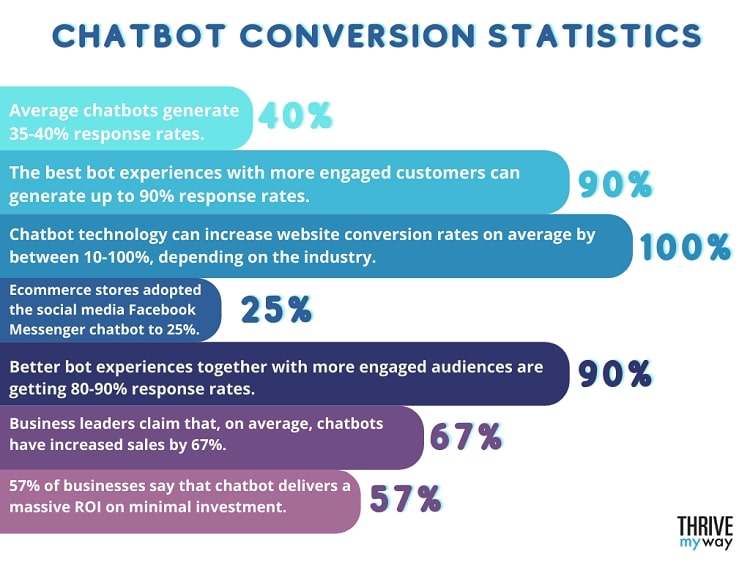
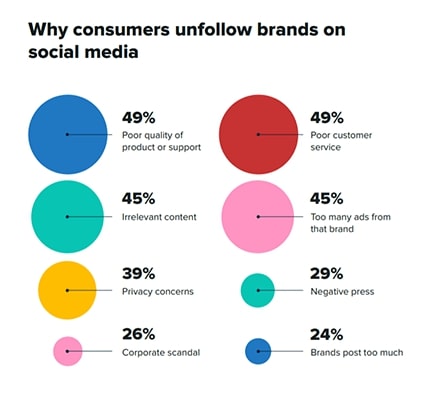
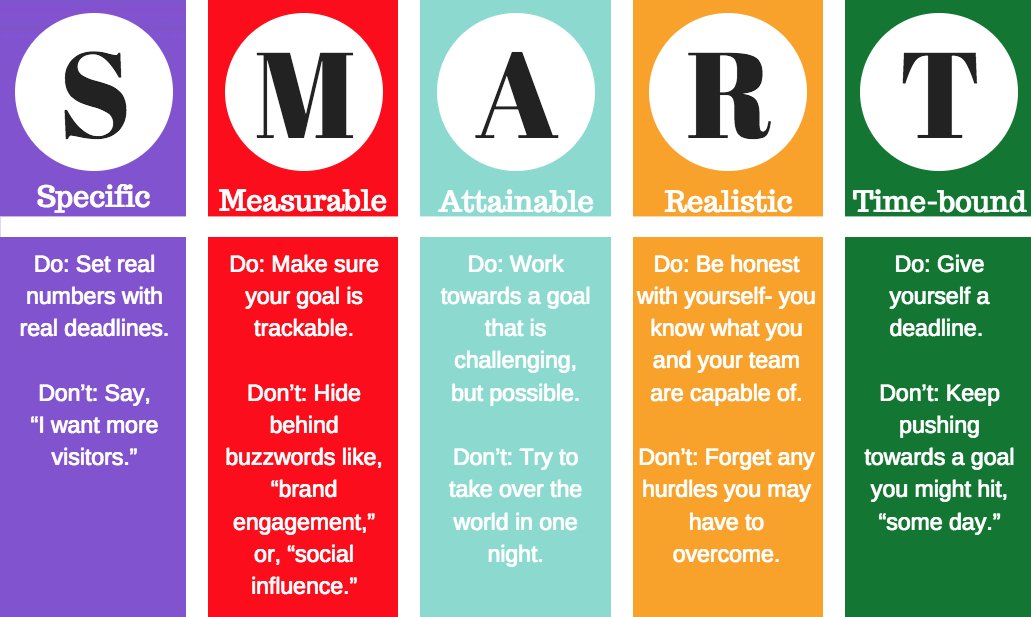
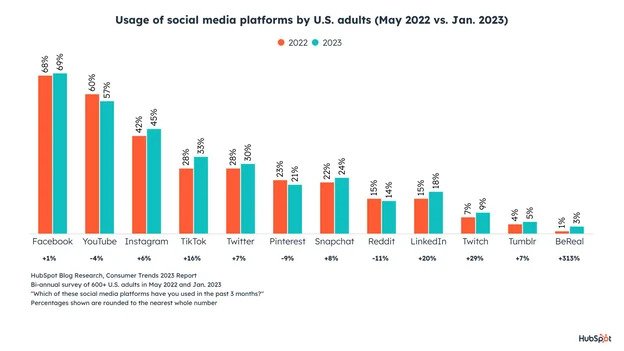
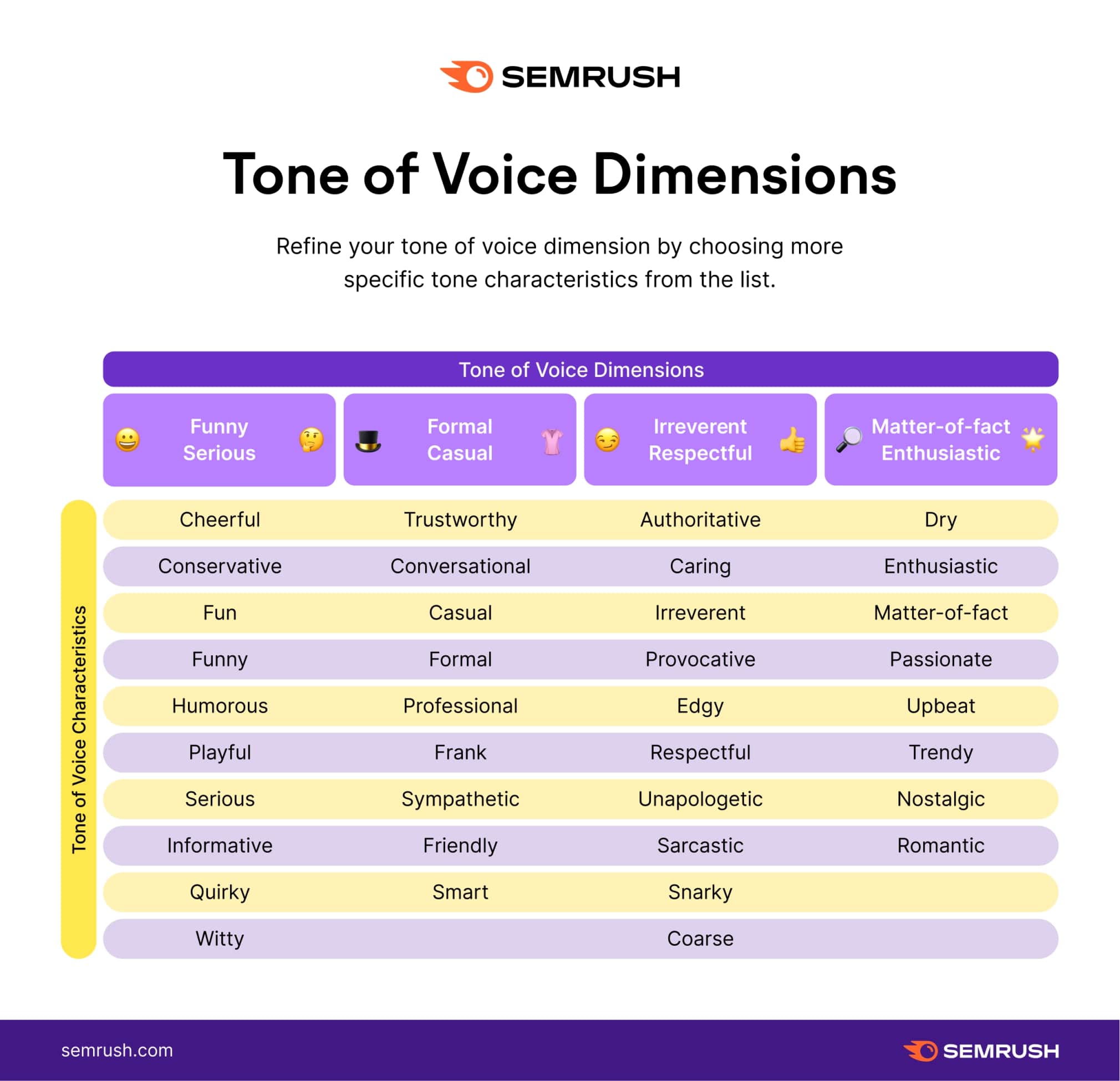
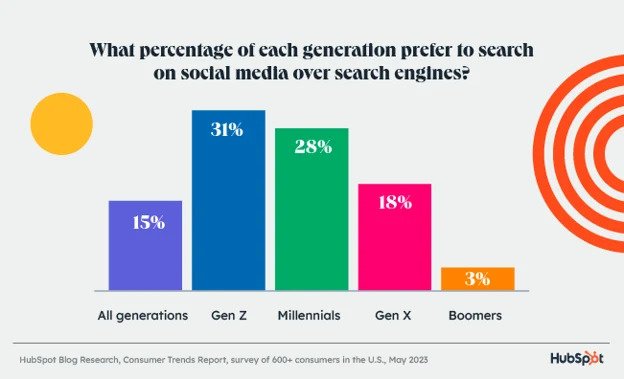
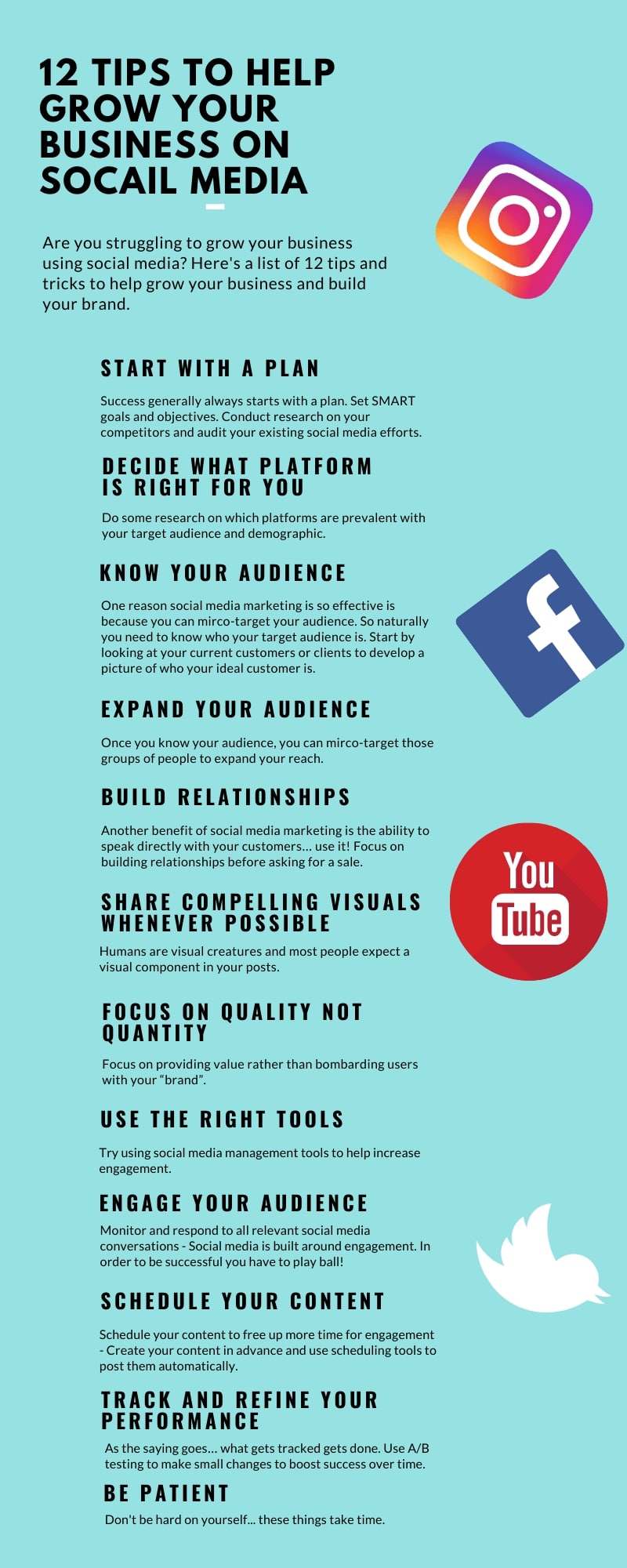
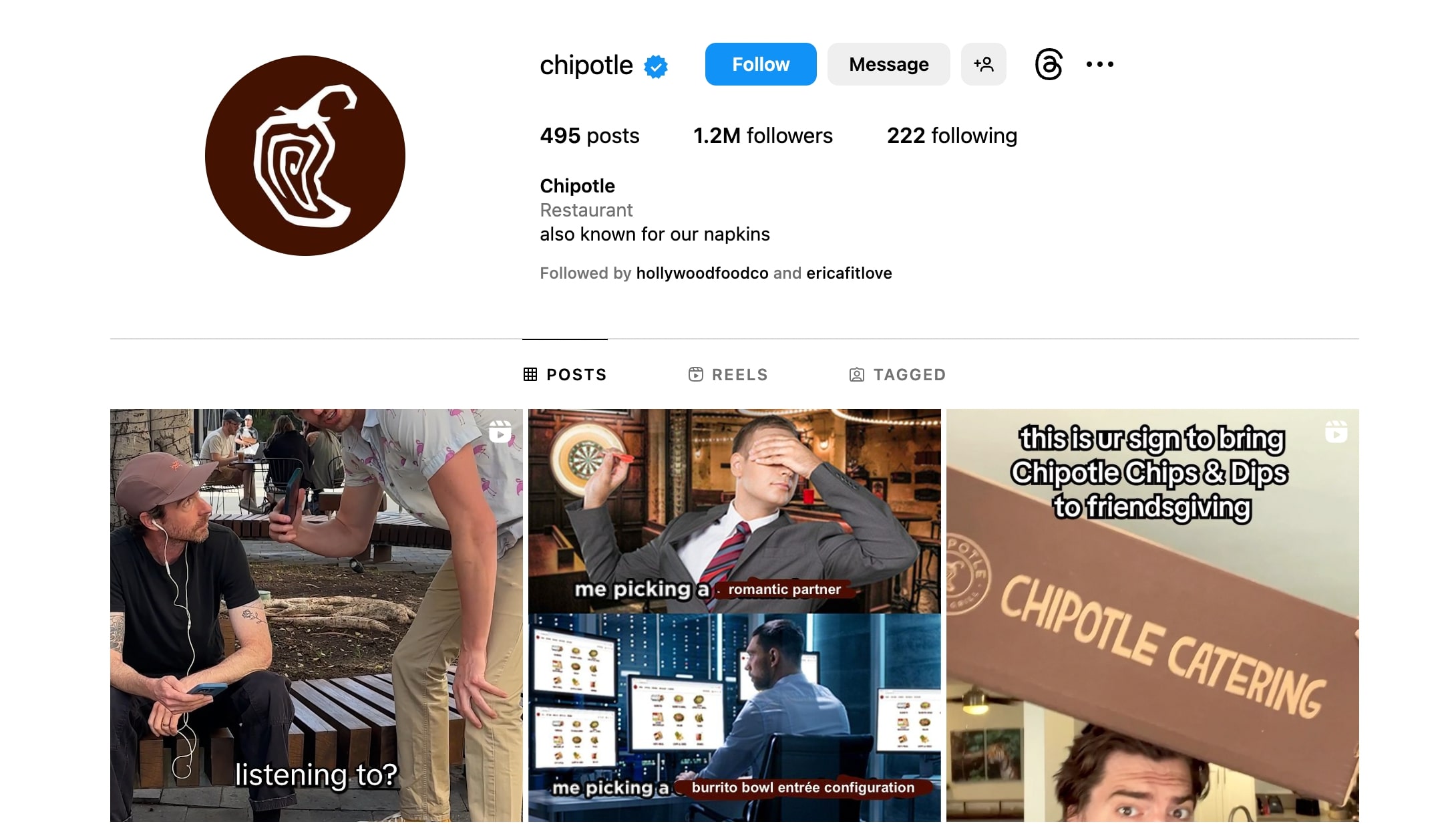
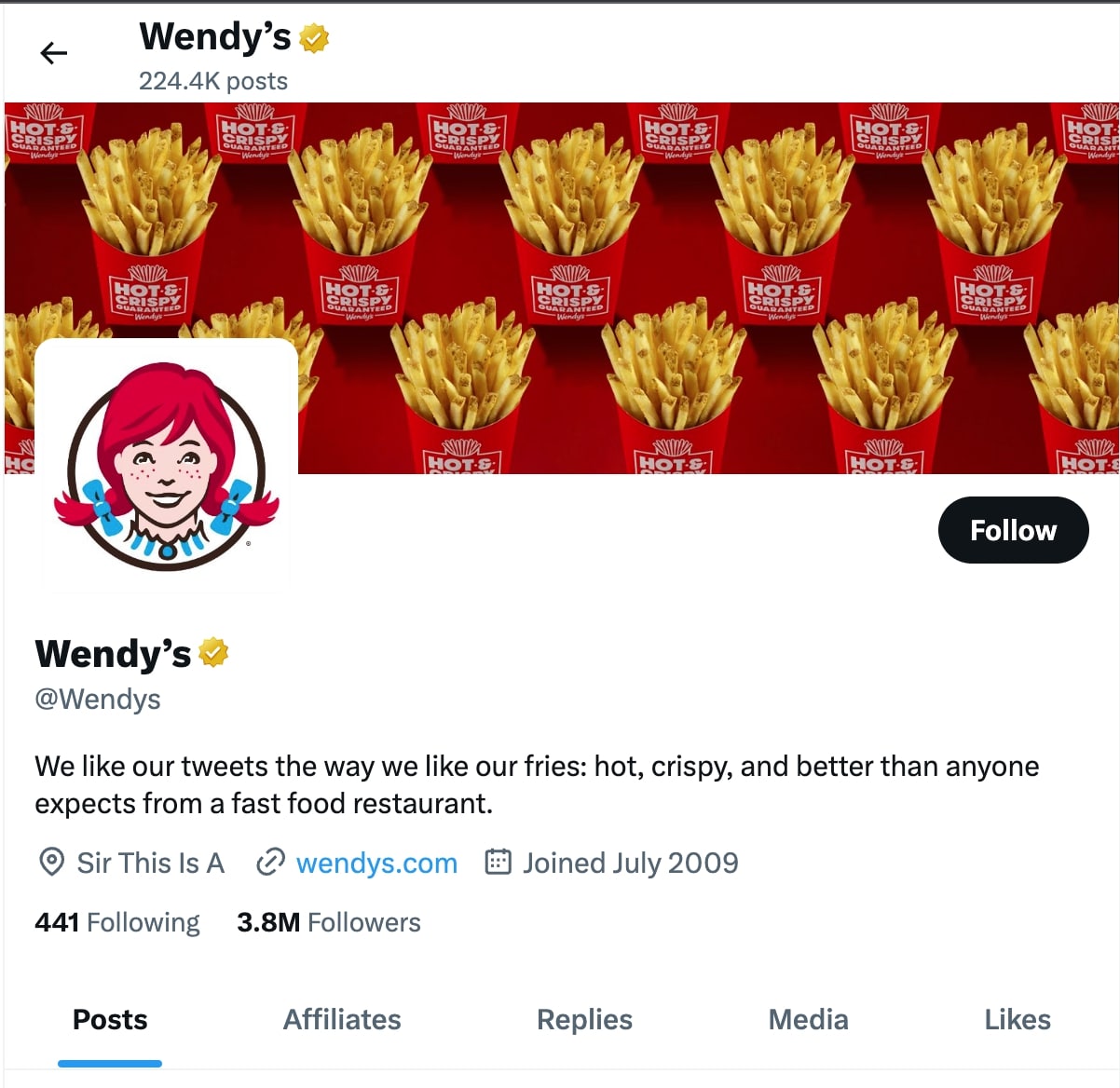

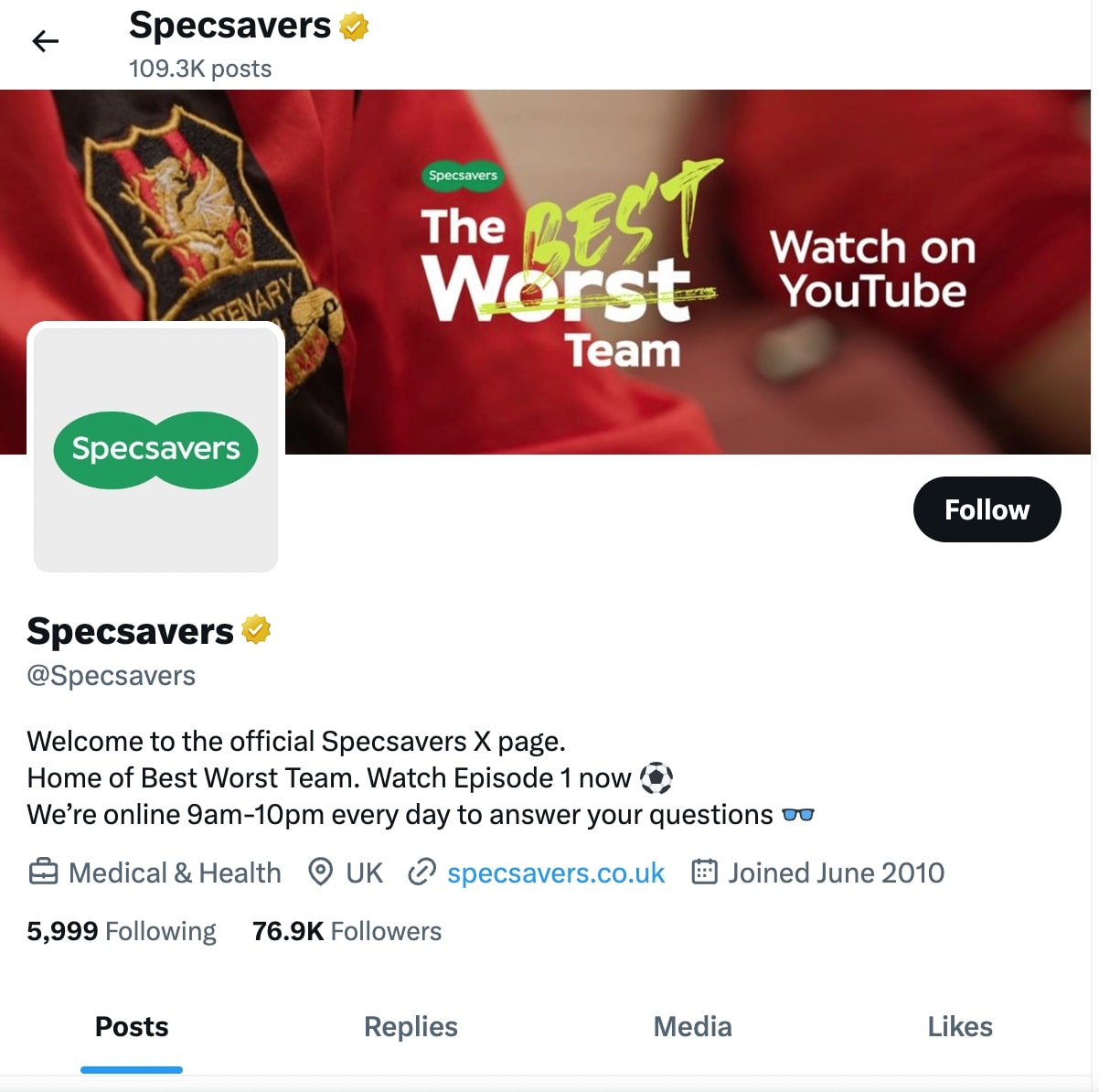

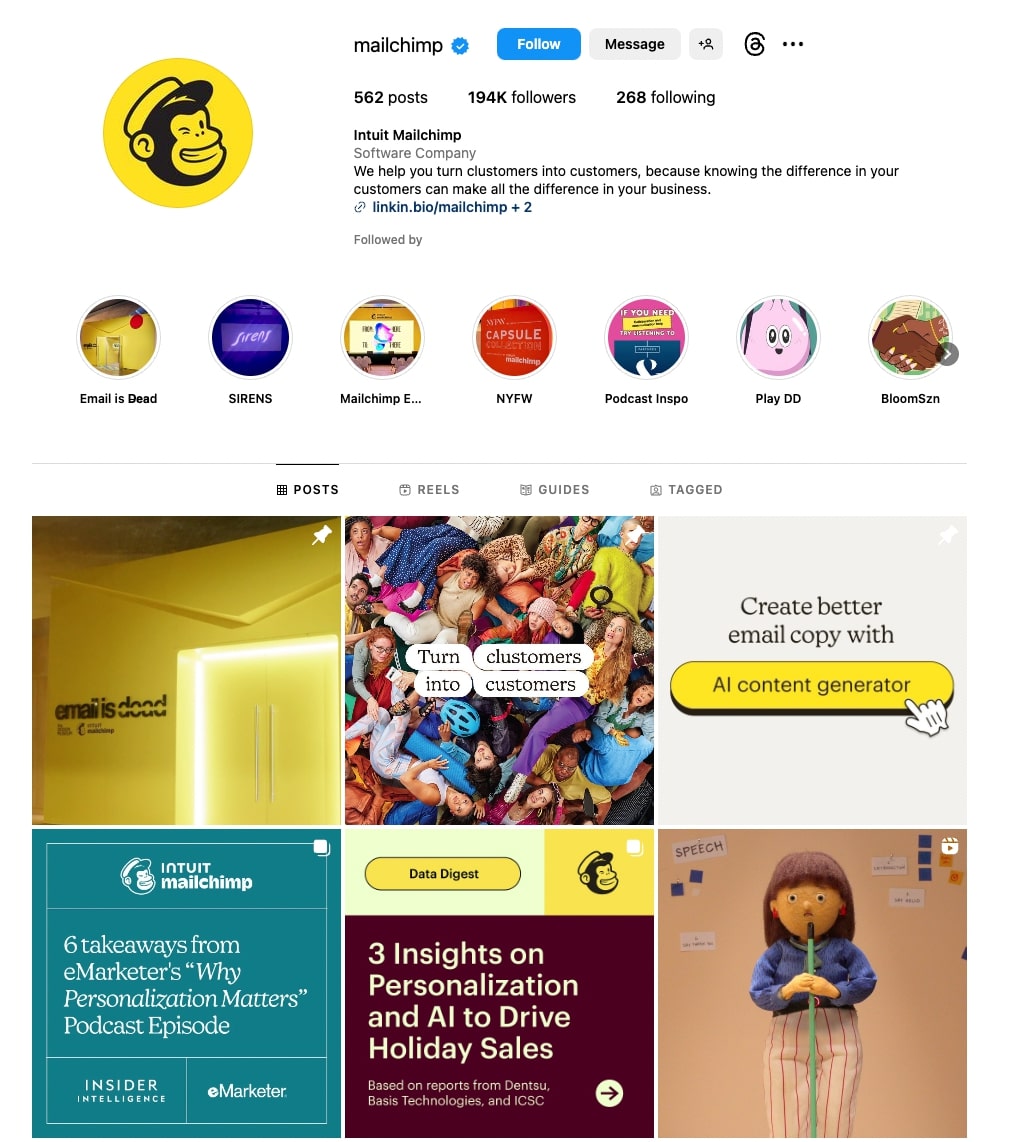



![The Ultimate Guide to Social Media Marketing: Tips, Strategies & Tools [{year}]](https://entail.mayple.com/en-assets/mayple/fit-in/280x280/637235283d1059598965dfd0_socialmediamarketing1_a8f42d67f17ada7c19a1fdf4471a18d7_2000-1699775614609.jpg)
